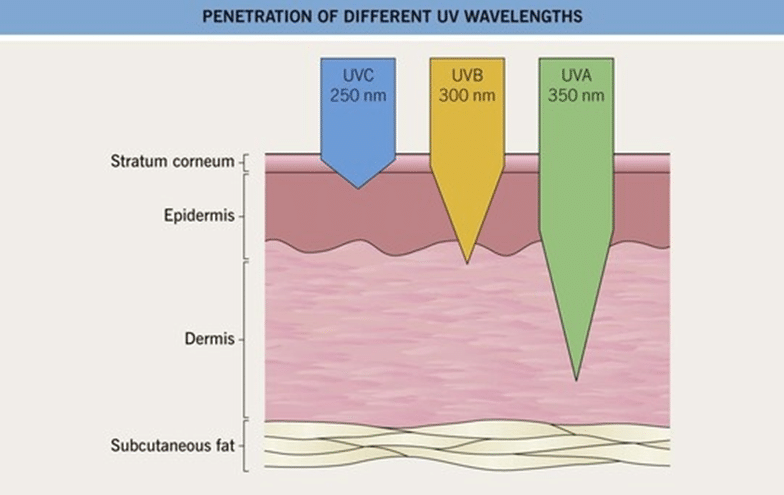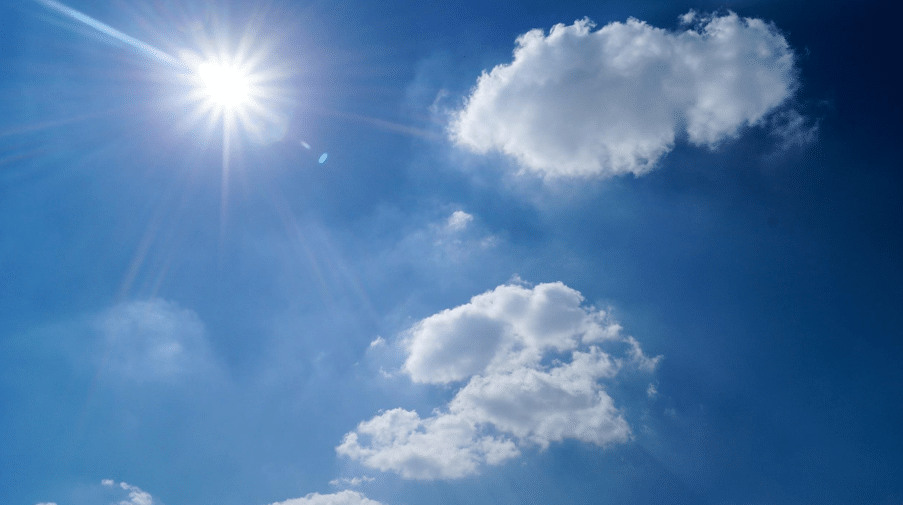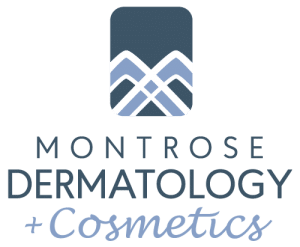The sun emits UV (ultraviolet) rays that are harmful to our skin. However, UV radiation can also come from other sources such as tanning beds and other lights with similar technology (such as lasers, mercury vapor lighting, and some fluorescent lights). More than 95% of the sun’s UV radiation that reaches the earth’s surface is UVA. Much of the UVB and almost all UVC is absorbed by the oxygen and ozone in the earth’s atmosphere. What are the types of ultraviolet radiation and what do they do to the health of our skin?

UVA and UVB Rays
UVA light is one of the two ultraviolet wavelengths we come into contact with most often within our atmosphere. They have much longer wavelengths than the other two types. Because of their length, UVA rays penetrate deeper layers of skin.
UVB light radiation is also known to impact us through our atmosphere. However, much of this radiation is absorbed by the ozone layer. These forms of radiation have shorter wavelengths and penetrate more superficial layers of the epidermis.
What health issues do they cause?
Both of these ultraviolet light types can cause not only sunburns, but can have more permanent effects as well. Symptoms of premature aging may arise due to excess UVA and UVB exposure. This may include discoloration, white or brown sun spots, and/or wrinkles that appear earlier in life. Also, a variety of skin cancers may begin to surface along with high exposure.
UV exposure has both short-term and long term effects. Short-term effects include sunburn, possible blistering and skin peeling. Long-term effects of chronic UV exposure include photoaging (skin discoloration, white or brown sun spots, and premature wrinkling) and UV-induced tumor formation (skin cancer).
UVC Rays
Rather than bouncing around in the atmosphere as the type A UV light does, UVC beams are absorbed by the ozone layer along with some of the UVB wavelengths. Despite being the most dangerous and radioactive UV ray, they have much shorter wavelengths and aren’t known to have harmful effects simply because they can’t get past the earth’s ozone layer.
How to Protect Yourself
You can keep UVA and UVB rays from penetrating your skin by wearing medical grade sunscreens and staying away from tanning beds and high amounts of sun exposure. Sticking to the shade, wearing protective clothing, and wearing UV-absorbent sunglasses can all help keep you safe and healthy!


